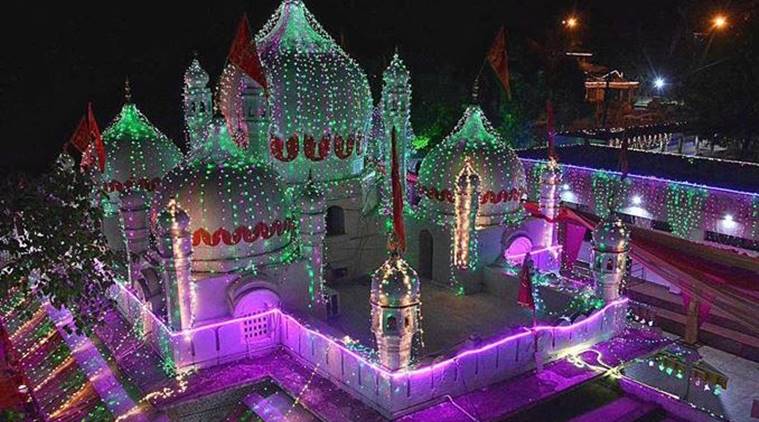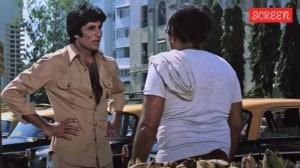Why the Mansa Devi temple in Panchkula is special
Come Navratras and all roads lead to the Mansa Devi temple in Panchkula. But have you ever wondered about its origins and the well-oiled machinery that keeps it chugging? PALLAVI SINGHAL takes a round of the complex to enlighten us
 The Mansa Devi temple was built around 1811 by the then king of Manimajra. (Express photo)
The Mansa Devi temple was built around 1811 by the then king of Manimajra. (Express photo)
Come Navratras and all roads lead to the Mansa Devi temple in Panchkula. Built around 1811 by the-then king of Manimajra a few years after he came to power, the temple is nestled in Bilaspur village in the foothills of the Shivaliks. A prominent Shakti temple, it is to this region what the Kamakhya Devi temple in Guwahati is to the east India.
Lore relates the temple to Lord Shiva’s consort Parvati. It is said that Parvati’s father King Daksha felt insulted by Shiva, and did not invite him to a grand yagna near Haridwar. Parvati, however, went to attend it, but once at the yagna, she realised the event was designed as an insult to her husband. Deeply hurt, she jumped into the ‘yagya’ fire and died. It is said Lord Vishnu, fearing Shiva’s wrath, cut her body into various parts that fell all over India. Her head is said to have fallen here.
Before independence, the temple was nurtured by various kings of Manimajra but after the princely states merged into the union of India, the temple fell into the hands of priests, who failed to utilise the offerings for its upkeep. The pilgrims continued to pour in but the temple fell on hard times. All this changed in 1991 when the Mansa Devi Shrine Board came into existence and took over the control of the temple by enacting the Haryana Mata Mansa Devi Shrine Act 1991.
THE EXPANSION
Prior to taking over the shrine, the temple and its compound was spread over 33 acres, which has since expanded to 104 acres. The first addition took place in 1998 when the state got possession of 10 acres of land held by erstwhile pujaris and others. Then, more than 57 acres were acquired by the board from the Bhainsa Tibba village at a cost of Rs 23.77 crore to provide amenities to the pilgrims visiting the shrine. The board also got an additional 4 acres from HUDA and now owns a grand 104 acres.
This land houses the main temple, three bhandara bhavans, three subsidised accomodations, one yagyashala, and pooja bhavan et al.
DEVOUT DONATIONS
The wealth of the temple has increased manifold since the board came into existence in 1991. The last financial year of 2018-19 recorded donations amounting to Rs 20.55 crore. In the current financial year till August 2, the temple had already received 9.20 crore in donation from devotees.
As many as 18 highly educated priests and their assistants are deputed at every temple of the shrine complex. Sudarshan, the principal pujari, two head pujaris and other assistant pujaris tend to the pilgrims every day.
FOOD FOR THE SOUL
The keepers of the temple rise with the sun to prepare 60 kilos of halwa every day as prasad to the visitors. Insiders in the kitchen say it is made with 15 kilos of desi ghee, 15 kilos of sooji and 30 kilos of sugar. But such is the rush of devotees that the halwa is consumed within 2-3 hours in the morning itself.
Various devout NGOs also take care of the hungry tummies of visitors by organising three bhandaras at special bhavans, two of them air conditioned These bhandaras are open from 8am to 10pm on regular days, and from 8am to 12am during the Navratras and other festivities. On offer are bread pakoras, puris and tea in the mornings, and kadhi chawal, a vegetable and rotis for lunch and dinner. Kadhi chawal is the one constant that has been served since the bhandaras began.
There is a long queue of the devout wanting to sponsor these meals; the present waiting time is, hold your breath, 365 days.
MATA LAJWANTI
Mata Lajwanti, an elderly resident of Chandigarh who died in 2001 at the ripe old age of 105, is arguably one of the most famous donors of the temple. She donated Rs 20 lakh for building the Lajwanti guest house in 1995. Members of the board say she sold part of her house to get the building made. She had a son, who was mentally challenged, and a daughter who had settled in Canada. It is said that none of her relations turned up for her last rites. It was finally the board CEO who performed her last rites and also took in her son.
VISITING HOURS
The temple generally opens at 4am and does not close till 10 pm but during the Navratras, it remains open 24×7, closing its doors only for half an hour around 12 midnight to 12.30 to give the idols a wash.
Though people from all over India visit Mansa Devi, it’s a regular fixture with people hailing from parts of Himchal, Punjab and Haryana, who make it a point to pay a visit after marriages and childbirth.
ALL SET FOR AYUSH HOSPITAL
The Mansa Devi Board also tries to pitch in for the weddings of young women from underprivileged families. The board invites applications along with invitation cards of girls’ marriages, picks the most deserving and helps them with a donation of 21 utensils, 10 sarees, 10 suits, a watch, a fan and other small tokens.
The board has also given land for AYUSH hospital that the government of Haryana is planning to open on its premises. Three rest houses, including Lajwanti guest house and Laxmi Bhavan, provide rooms to guests at subsidised rates of Rs 200 for non-AC and Rs 400 for AC rooms, and there is a 20-bed night shelter for homeless people.
Also in the offing are a Sanskrit college and an old age home.











